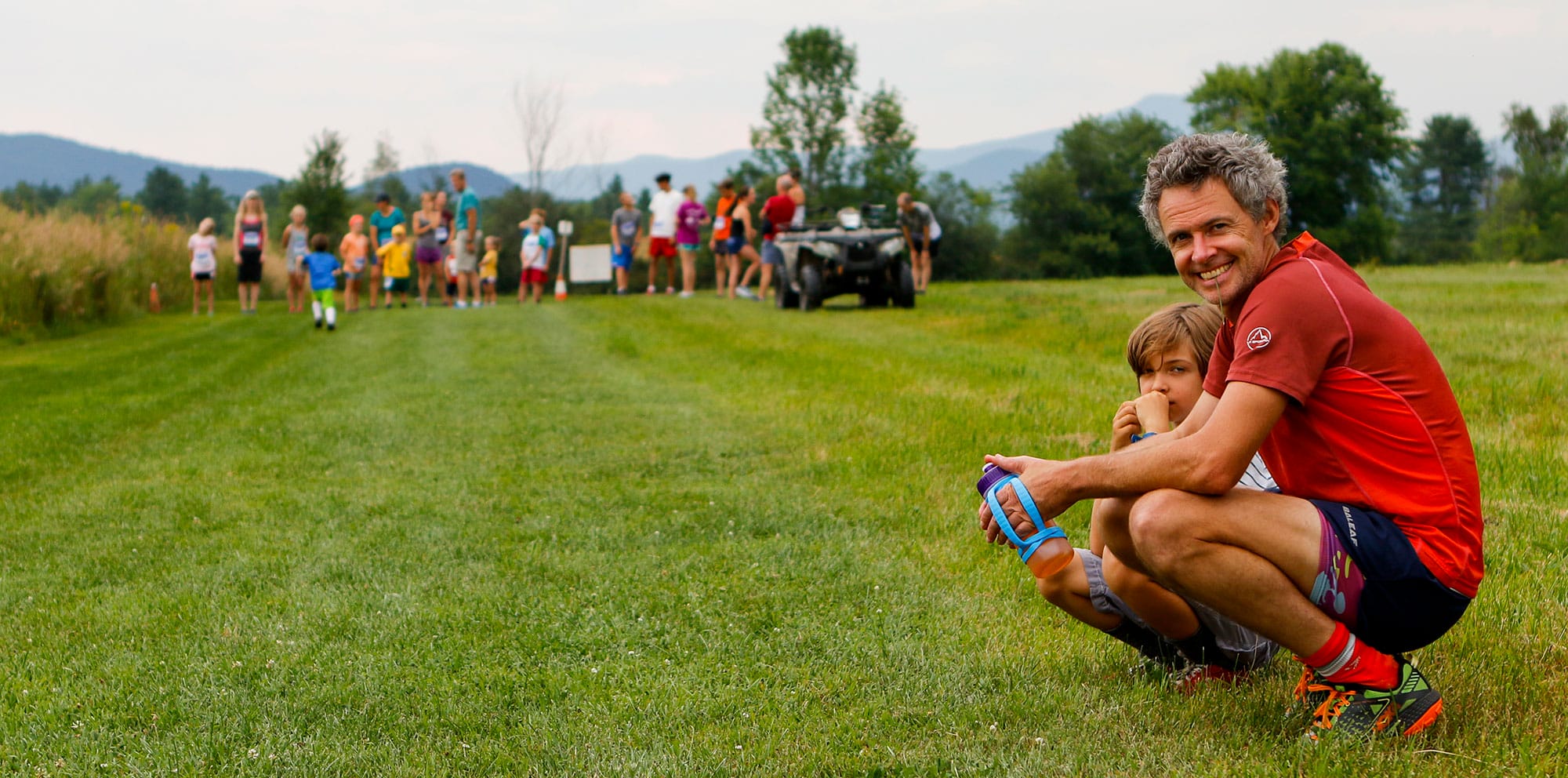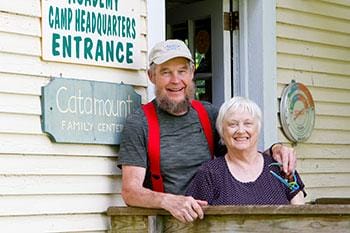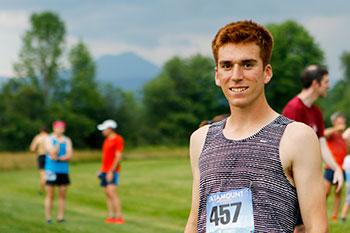Even as their stars rose in the sport, Sabra says they always looked forward to racing at Catamount, because the vibe is “low-pressure and fun.” Catamount is also where, in 2007, the sisters founded Little Bellas, a mountain biking program for girls aged 7 to 16.
There’s hardly a breeze, but there is a buzz in the air: the longest-running weekly mountain bike race in the U.S. is about to start.
At six o’clock, riders line up for the first heat. Tag Carpenter, the center’s operations manager, clutches a clipboard as he faces a phalanx of determined-looking riders. “Racers! Are you ready? Three. Two. One. Go!”
And then they’re off. A dozen “cubbies”—racers eight years old and younger—pedal furiously across a freshly mown field. A few minutes later, their oversized helmets bob back into view, and they cruise across the finish line. One of the riders, a girl of about six, plops down next to her mother and father to debrief her first-ever bike race.
“Was it fun?”
“Yeah!”
“Maybe next time you can try the longer loop,” her mother says, as they walk over to high-five her older brother. He’s all smiles as he completes a five-kilometer lap on the course for older kids. His father hoists him in the air with a bear hug.
When I ask them how they found this place, the dad smiles and says, “I first raced here 25 years ago.”

Jim and Lucy McCullough had two goals in sight when they launched the Catamount Outdoor Family Center on their family farm in Williston, Vermont, in 1978. One was keeping their land—400 acres of forests, meadows, and jaw-dropping views of the Green Mountains that have been in Jim’s family since 1873—intact and undeveloped. The other was to encourage more people to do what they themselves loved to do: get outside.
Since 1990, every Wednesday all summer long, bikers of all ages and abilities have gathered at Catamount. Tuesday nights are a similar scene, but for runners; nearly 200 come each week to trace a five-kilometer loop. Wearing bibs with numbers, racers are timed and their results posted online. But that’s where the resemblance to most organized race events ends.
“You’ll see Division 1 runners lined up next to people walking their first 5K, Olympians next to kids jogging with their grandparents, middle-aged guys giving it their all,” says Kyle Darling, a Burlington resident who’s raced on the trails at Catamount for most of his life. “That’s what’s special about it: everyone competes on the same course, at the same time.” The season culminates in a convivial end-of-summer potluck dinner where racers get prizes for attendance rather than speed.
“You’ll see Division 1 runners lined up next to people walking their first 5K, Olympians next to kids jogging with their grandparents, middle-aged guys giving it their all.”
 Pamela Gude holds a Catamount attendance record that is unlikely to be broken anytime soon: she was on the starting line with her mountain bike every Wednesday, all season long, for twenty years. She started riding for the exercise, in the hope that it would help with the chronic fatigue she was experiencing from what would eventually be diagnosed as lupus.
Pamela Gude holds a Catamount attendance record that is unlikely to be broken anytime soon: she was on the starting line with her mountain bike every Wednesday, all season long, for twenty years. She started riding for the exercise, in the hope that it would help with the chronic fatigue she was experiencing from what would eventually be diagnosed as lupus.
“I started going every day,” she says. The atmosphere was welcoming, rather than intimidating, and the riders she met were generous with advice. “I would change into bike clothes at the end of a workday, drive to Catamount, open the car door, roll out, and fall asleep for an hour. Then I’d get on my bike, ride for an hour or two, and go home.”
Riding regularly improved her symptoms, and her strength and stamina grew until she could tackle some of the steep, technical routes that lead up to the Lookout, the highest point on the land. Eventually she won some of the races in her age category—an accomplishment that “felt like being empress of the world.”
There are plenty of places in New England to find challenging mountain bike terrain. But there aren’t many where racers might find themselves lining up next to world-class athletes like Andy Bishop, a retired pro cyclist who lives in Williston, or Olympic mountain bike racer Lea Davison, who grew up in nearby Jericho and still rides on the occasional Wednesday night as a training tune-up for her World Cup races.
“And let me tell you how exciting it is that middle-aged ladies like me, and little boys and girls with tassels on their handlebars, can ride on the same night that a World Cup rider is riding that course,” marvels Gude. “Where in the world does an aspiring tiny tot football player get on the field with a great giant? And [these kids] you’re seeing [today] may be tomorrow’s Olympic hopefuls.”
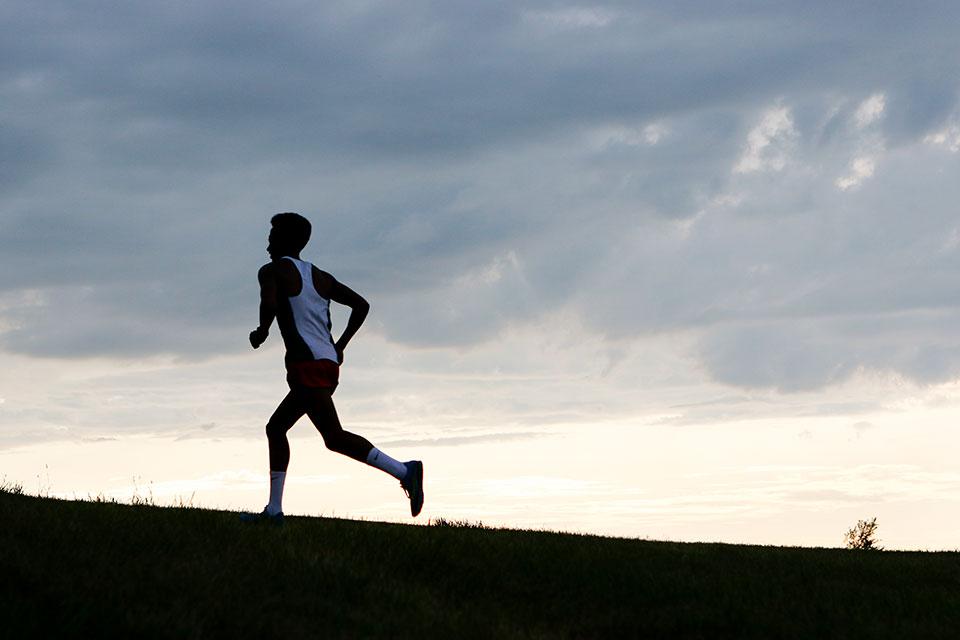
Jim’s widowed mother needed help managing the place, which had been a dairy farm until the 1960s. They started casting about for ways to pay the bills. A neighbor family suggested they lay out some Nordic ski trails to attract devotees of the newly popular sport.
Jim and Lucy McCullough launched the Catamount Outdoor Family Center on their family farm in Williston, Vermont, in 1978.
Jim assumed responsibility for maintaining and grooming the trails, and he took his task seriously. A visiting Austrian Olympic ski coach once told him Catamount had one of the best interval loops for training in the world. But some years, the snow didn’t fall, and the McCulloughs couldn’t pay for their radio advertising contracts, let alone property taxes.
So they turned to other revenue-generating schemes—not all of which panned out. They hosted BMX biking events, fundraisers, disc golf tournaments, archery groups, and sleigh rides, and even tried running an on-site restaurant. For many years, they operated a Christmas tree farm.
Ask them about the speed skating oval they built and groomed for three years with a secondhand Zamboni, and they smile and shake their heads ruefully.
Mountain biking was in its infancy in the early 1980s when a few local diehards started riding their bikes on Catamount’s ski trails in the summer months. So Jim started mowing some trails and building shortcuts between the old logging roads. As the sport’s popularity grew, he cut new single-track trails. They hosted their first mountain bike race in 1984.
“We saw how the races drove daily usage, so we decided to launch a trail running race, too,” Jim says, despite the fact that almost no one was trail running back then. Just six people showed up the first week, and four the second week. It would be years before runners outnumbered bikers, but they stuck with it.
“We thought, ‘They’ll figure it out eventually!’” says Lucy. All through the years, she was the chief customer service representative—hauling bikes around, greeting people—and Jim was the chief trail builder. Their three daughters joined the team as soon as they were old enough: their daughter Abbie launched a summer camp program and ran it for years, and her husband, Eric, was executive director of the Catamount Outdoor Family Center. And all along, the family cobbled together mortgages and loans to “keep the plates spinning,” as Jim puts it.
Meanwhile, the kids who came to the races grew up. “Some married each other and now they bring their kids here,” Jim says. “It’s just a gift.”

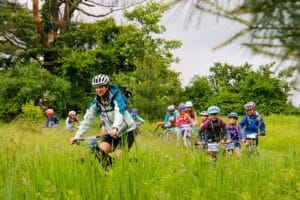
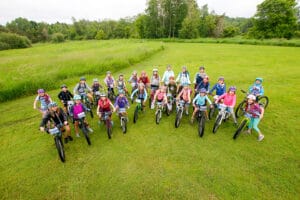
Today you can sign up for a Little Bellas program in 16 states, but Catamount remains their testing ground. “The thing that Catamount offers that other trail networks don’t is a sense of community, being in a competitive sphere that’s also a really inviting atmosphere,” Davison says. “Catamount invites so many different kinds of programs to its property. There are so many populations that place serves.”
Special Olympics of Vermont athletes have been coming to Catamount for cross-country skiing and snowshoeing training for the past 30 years. And with three miles of trails designed for sit-skiing and off-road wheelchairs, Catamount is the only place in Chittenden County where disabled athletes can really get into the woods.
Patrick Standen, a philosophy professor at St. Michael’s College in Burlington who lost the use of his legs in a car accident nearly forty years ago, is cofounder of the nonprofit Northeast Disabled Athletic Association. NDAA has been running Nordic sit-skiing clinics and offering equipment rentals at Catamount for nearly two decades.
“For our populations of persons with disabilities and mobility impairments, and for me personally, having access to the woods in winter is priceless,” he says. “It’s regenerating.”
In the venerable Catamount traditions of expanding access and embracing innovation, NDAA is now launching a program for off-road hand-cycling, modeled on their success with sit-skiing. “They’ve got wide-open old logging roads and a variety of trails,” says Standen. “Catamount is the perfect venue.”
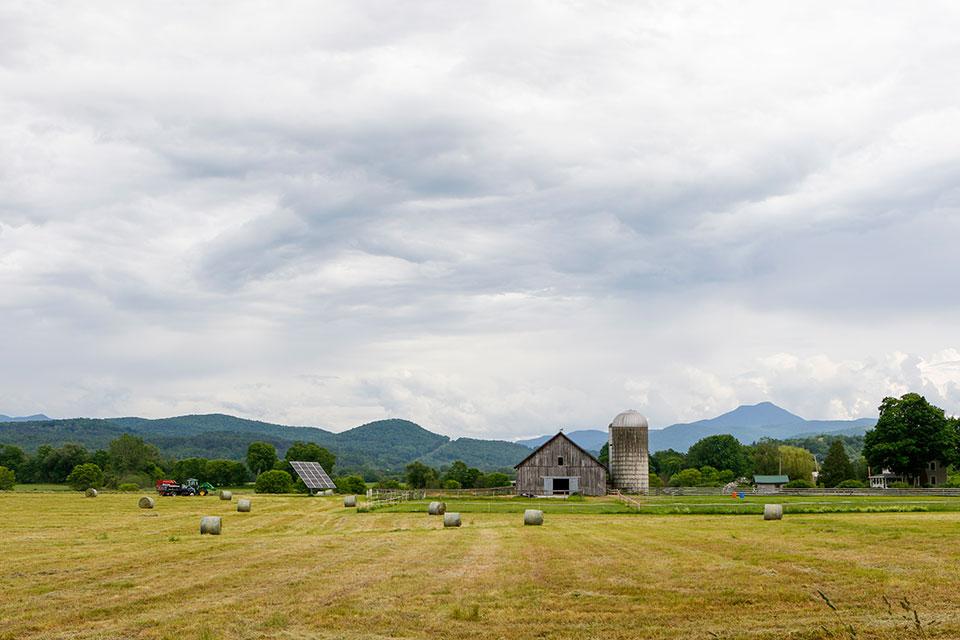
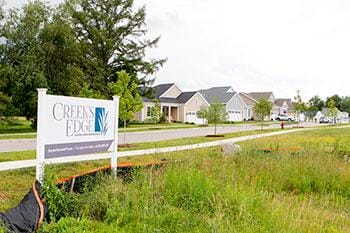 Catamount is a 15-minute drive from Burlington, the largest city in the fastest-growing metro area in Vermont, says Williston’s conservation planner, Melinda Scott. “It’s become increasingly important, as the town continues to develop out, to have a protected area like this for people living nearby, to have this big forest where they can go and exercise.”
Catamount is a 15-minute drive from Burlington, the largest city in the fastest-growing metro area in Vermont, says Williston’s conservation planner, Melinda Scott. “It’s become increasingly important, as the town continues to develop out, to have a protected area like this for people living nearby, to have this big forest where they can go and exercise.”
The property’s western edge is within shouting distance of the new houses springing up along busy North Williston Road—a specter, say the McCulloughs, of what could have been.
“Developers had worn the shellac off our door knocking to buy the place,” says Jim. But he and Lucy had been holding them off and exploring ways to conserve their property for decades.
“The McCulloughs have a deep, deep connection to the land,” says Kate Wanner, a project manager at The Trust for Public Land who worked with Lucy and Jim to conserve the property. As retirement neared, all their net worth was tied up in their land. To survive, the McCulloughs needed to sell—one way or another. They explored the possibility of turning the land into a state park, but the State of Vermont didn’t have the money.
“Keeping it open to the public was one of the McCulloughs’ really important goals,” says Wanner. “They asked, ‘How can we sustain this vision of connecting people to the land in perpetuity?’”
They connected with Wanner, who helped marshal public agencies, foundations, and donors to make that vision a reality. In March, the effort culminated in the transformation of 393 acres of the property into the Catamount Community Forest, owned by the Town of Williston. The land and its beloved trails will be open to the public forever, with a conservation easement held by Vermont Land Trust.
“Developers had worn the shellac off our door knocking to buy the place.”
She’s noticed how, coming downhill from Hairpin Ledge, before you reach the log bridge, the air is nearly always 15 degrees colder by the face of the rock shelf, and higher-altitude species of plants thrive in its cool, moist shade. She’s registered the hickory trees that grow in the Three Rivers area, where there’s flowing water, but nowhere else.
Her lupus has progressed to the point that she’s no longer comfortable racing. “I can’t train the way I used to. I have to manage inflammation pretty carefully,” Gude says. Last year, she ended her record-setting twenty-year attendance streak. But there will always be a place for her at Catamount: she recently completed a master naturalist training program and plans to work on developing a naturalist program at Catamount for local youth.
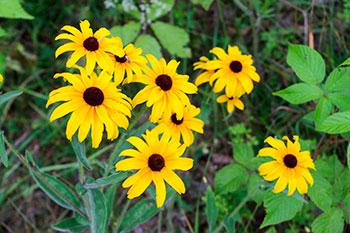
Catamount gives much to its devoted users, and they want to give back. It’s how Lucy and Jim knew it was time to retire from managing Catamount Outdoor Family Center (which now operates as an independent nonprofit), and why they held out so long to conserve the land and keep it open to the public.
“Working the starting line every Tuesday and Wednesday night, we made a point of saying, ‘Thank you for coming,’” says Jim. “The community is responsible for carrying it through all these years to the point it could be protected. That lifetime goal of public access is now good beyond our grave.”
Since the transfer to town ownership, the place—with its steady, laughing flow of summer campers, weekly racers, and day users—feels much the same. But there is one change Lucy has noticed since Catamount became a town forest and open to free pedestrian use: “There are a lot more birders, and more people just out walking.” In other words, these days there are more people enjoying it than ever.
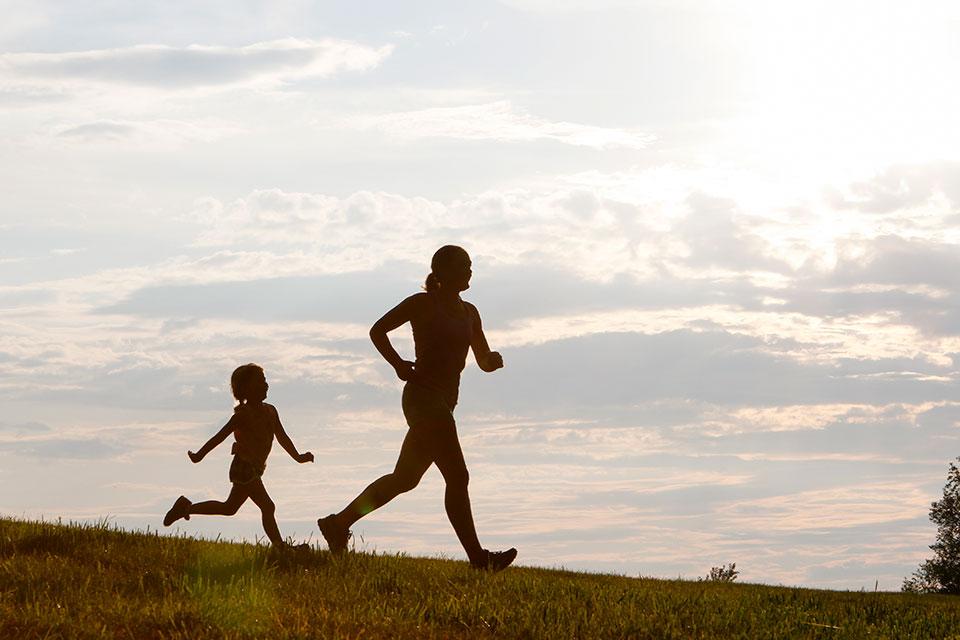
Tyler Marshall volunteers at Catamount and regularly runs on Tuesday nights to train for his NCAA events.
A few hundred yards away, their avian bustle is mirrored by nearly 200 racers limbering up, chatting, and readying to run.
The only other figure out there among the bobolinks is Tyler Marshall, running laps on a hill to warm up before the race. Later that night he’ll handily take first place.
Tyler first started running at Catamount when he was eight. A decade later, he became one of the fastest distance runners in Vermont history, setting multiple state records during his career at Champlain Valley Union High School. Now a junior at the University of Vermont, he volunteers at Catamount and regularly runs on Tuesday nights to train for his NCAA events..
When he won the national Gatorade Player of the Year Award in 2017 for track and field—which came with a $1,000 grant to be donated to the organization of the winner’s choosing—it wasn’t hard to decide what to do with it.
“I immediately thought of Catamount because of what it did for me as a kid when I participated in summer camps and the weekly races,” he says.
“I was hoping that the donation would help Catamount continue to be a place where kids like me can find their own passion and love for biking, running, or anything else, for years to come.”


